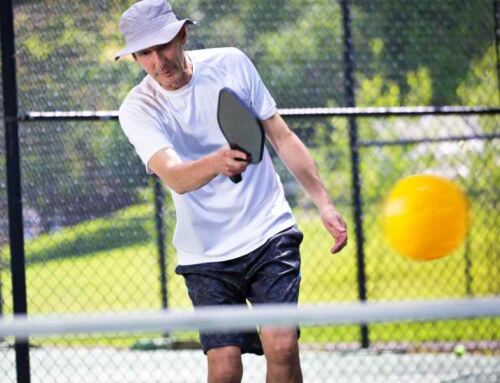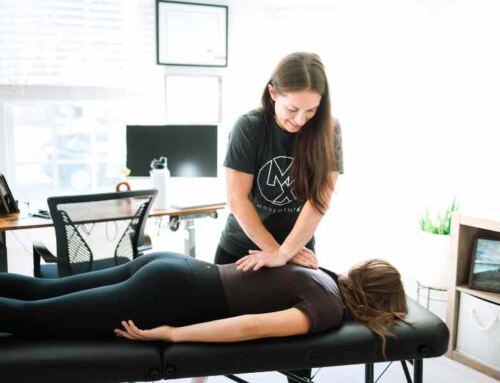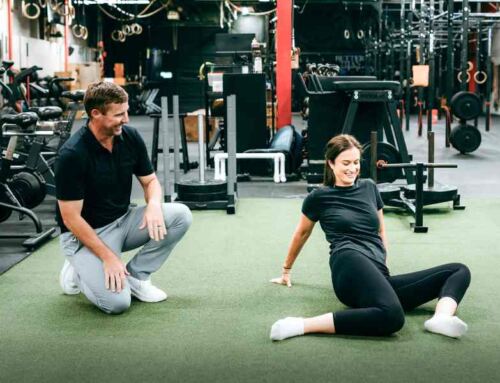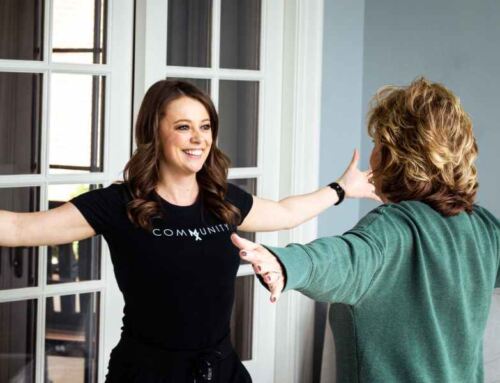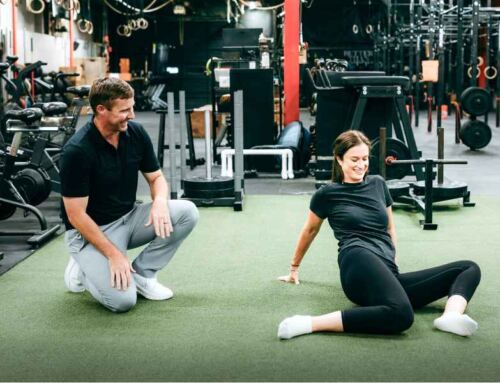When you have an injury and you are competing in a sport, nutrition and movement preparation are more important than ever. The below guidelines have been written by Kristen Lattimore, a Doctor of Physical Therapy for MovementX and Crystal McLean, a Registered Dietitian Nutritionist. Both of these professionals specialize in working with motivated, skilled athletes. They have highlighted the below information in order to give these athletes a robust understanding of how to compete at a high level through nutrition and movement preparation.
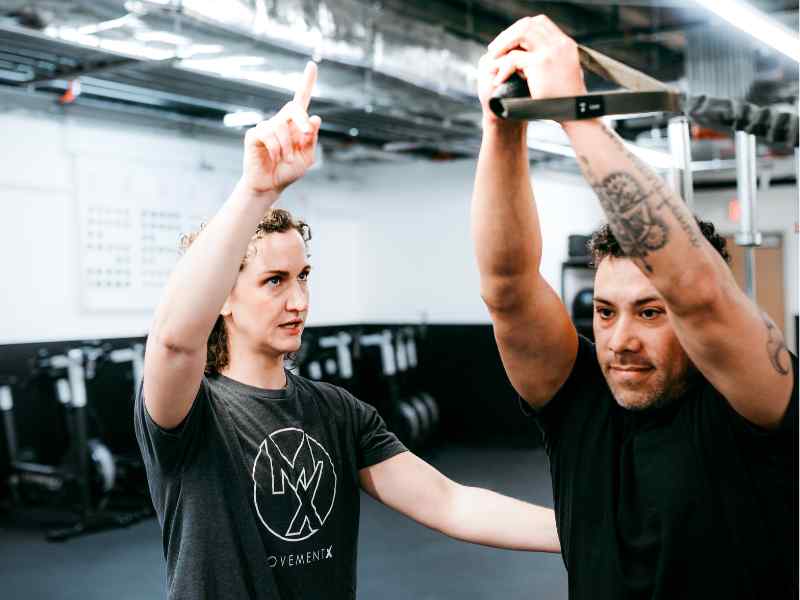
How to Prepare for Movement
Structuring your warm up in the following steps will allow for optimal preparation that not only enhances performance but prevents exacerbation of your injury or re-injury altogether.
Light aerobic activity
This allows for your muscles and joints to warm up as your heart rate increases. When muscles are warmed up they are more easily mobilized and stretched.
Dynamic Stretching
These movements take our joints through a variety and full range of motion. I.e. leg swings, walking lunges, pull aparts, inchworms, spiderman. Static stretching should be avoided here.
Sport Specific Movement
This is the time in your movement preparation where you want to pick movements that mimic your sport and the area of your body that is currently or was previously an issue for you.
Examples:
- When an individual is experiencing over-use of the posterior cuff of their throwing arm, I have athletes focus on full range of motion shoulder use to prevent premature stoppage of your arm during throwing. This can look like single arm chops from overhead to the opposite hip.
- With a hamstring strain, complete bridges starting with two feet, then complete them on one leg, and then add in a hop in a bridge position.
- If you sprained ligaments of your knee by cutting or changing direction in sport, complete lateral banded walks, progress to lateral banded shuffles, and then change direction based on a verbal or visual command with legs banded. This will get your major stabilizing muscle of the hip to engage so reaggravation of the originally injured ligaments is less likely.
Neuromuscular Control
These drills should increase coordination in the area of injury and provide input to your neuromuscular system in order to heighten its activation and prepare you for sport.
Examples:
- Double and single leg hops for a leg injury in a basketball player
- Eccentric ball toss and catch in max external rotation in a baseball or softball athlete
- Power push ups in a football center with shoulder pain or injury
Scale up: Next you slowly build intensity in the area of concern. Start around 50% and build up to 80% or more of your max capability.
Examples:
- Build speed in your sprints in a forward direction but also in stopping
- Work up toward your ability to jump off two and then one foot
- Throw short, controlled distances and build to more powerful distance throwing
Extra Considerations
Throughout your movement preparation, listen to your body for information surrounding feelings of pain, weakness, or instability. These details can help you and your physical therapist formulate a more specific plan for future practices or games.
Also, have a plan going into your warm up that highlights what level of pain you and your physical therapist are comfortable with you experiencing. Be honest with yourself and let your coaches know your plan. If you have agreed to play the infield instead of the outfield and keep your pain level below 3/10, inform your coaches of this and ask them to keep you accountable and be part of your healing process. Every athlete wants to compete and do their best but prioritizing winning over your health can keep you out of the game long term and dramatically lengthen your healing time.
Keep completing a thorough warm up even after you feel like your pain or injury has resolved. A warm-up that is specific to you and your injury history will prevent re-injury and improve your performance.
And, if you have pain or a movement concern, find a physical therapist that works regularly with athletes or motivated movers. They can be the difference between a short term concern and a long, drawn out, nagging injury.
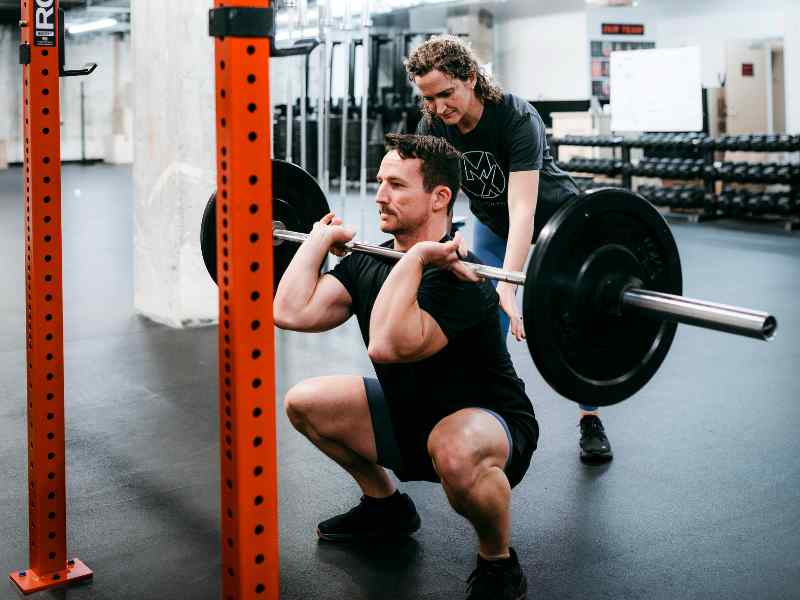
How Nutrition Supports Injury Prevention and Healing
Whether you’re a competitive athlete, a weekend warrior, or someone just getting into a regular exercise routine, nutrition plays a vital role in both preventing injuries and supporting recovery after an injury or surgery.
Injuries can range in severity, but no matter the case, your body needs the right fuel—calories and nutrients—to repair tissues, reduce inflammation, and rebuild strength. While there’s often an emphasis on calorie restriction for physique goals, eating enough to meet your body’s needs is just as—if not more—important during times of recovery. Let’s take a closer look at how different nutrients contribute to healing and performance:
Calories: Your Body’s Energy Supply
Calories are the energy your body uses to function and heal. After an injury or surgery, your calorie needs may slightly increase due to the energy demands of tissue repair and immune system activity. If you’re not consuming enough, your body may struggle to heal properly, especially when physical therapy or rehab is part of your routine.
Protein: The Building Blocks for Healing
Protein—made up of amino acids—is essential for maintaining and rebuilding muscle, repairing tissues, and transporting nutrients throughout the body. During recovery, adequate protein intake supports the regeneration of damaged tissue and helps prevent muscle loss. Aim to combine protein with other key nutrients for best results.
Carbohydrates and Fiber: Fuel + Recovery Support
Carbohydrates are your body’s primary energy source, especially for high-intensity movement, speed, and agility. They also support brain function and help keep your body energized for training or therapy.
Don’t overlook fiber, a form of carbohydrate found in plant-based foods. Fiber promotes digestive health, which is closely linked to immunity and overall wellness. Eating a wide variety of plant foods gives your body different types of fiber and essential micronutrients.
Fats: Nutrient Absorption and Inflammation Control
Fats are a critical component of a well-balanced diet. They help with the absorption of fat-soluble vitamins and play a key role in managing inflammation. Focus on healthy fats like monounsaturated and polyunsaturated fats—especially omega-3s—from sources such as olive oil, avocados, nuts, seeds, and fatty fish.
Micronutrients: Small but Mighty
Vitamins and minerals play a big role in the recovery process. For instance:
- Vitamin C supports collagen production for tissue repair.
- Iron helps red blood cells deliver oxygen to healing tissues.
- Calcium, magnesium, zinc, and folate are all important for bone and tissue health.
You’ll find these nutrients in a balanced diet that includes lean proteins, dairy or fortified alternatives, and plenty of fruits and vegetables.
Hydration: The Unsung Hero
Staying hydrated is crucial during injury recovery. Water helps with circulation, nutrient transport, digestion, and temperature regulation. Don’t underestimate its role in the healing process
General Tips for Injury Recovery Nutrition:
- Include approximately 20 grams of protein in each meal.
- Aim for 25–40 grams of fiber daily by eating a variety of colorful plant foods.
- Drink 1.5–2 liters of water per day—more if you’re sweating or in a warm environment.
- Don’t shy away from carbohydrates, especially if you’re still active in any way.
- Choose healthy fats—think olive oil, nuts, seeds, and omega-3-rich fish like salmon.
In Closing
If you’re recovering from an injury or surgery (or want to optimize your performance and resilience) nutrition should be a cornerstone of your approach. For tailored advice in putting all of this together, consider speaking with a registered dietitian or your healthcare provider.
About the Author
Dr. Kristen Lattimore is a doctor of physical therapy in Raleigh, North Carolina. She enjoys combining dry needling for the treatment of pain with corrective exercises to optimize patient movement. Whether you’re looking for orthopedic or neurological treatment, post-operative care, or coming back from a sports injury, look no further than Dr. Kristen Lattimore.



